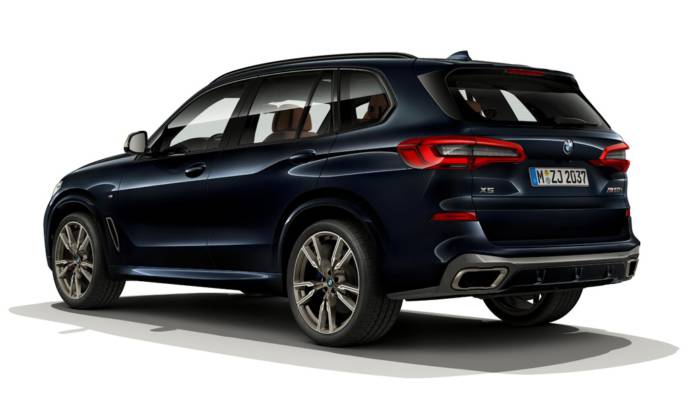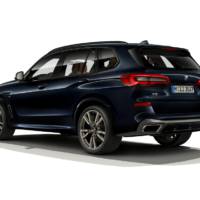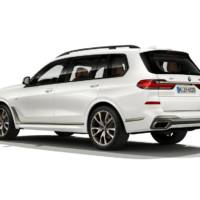BMW extends the X7 and X5 ranges with the introduction of a two new powerful versions, dedicated to those who want performance. The BMW X5 M50i and BMW X7 M50i join the X5 and X7 lineups this fall when production begins in BMW Plant Spartanburg, SC.
Both models feature the new top version of the N63 4.4L TwinPower Turbo V8 engine backed by an eight-speed sport automatic transmission, BMW’s xDrive intelligent all-wheel drive , M Sport differential, M Sport exhaust system and model-specific M GmbH suspension tuning.
The latest generation of the 4.4-liter eight-cylinder engine features numerous detailed improvements. Two twin-scroll turbochargers with charge air cooling located within the V-shaped space between the cylinder banks, High Precision Injection, VALVETRONIC fully variable valve control and Double-VANOS variable camshaft timing all form part of the M Performance TwinPower Turbo technology package which delivers 523 hp between 5,500 and 6,000 rpm and 553 lb-ft of torque between 1,800 – 4,600 rpm. – an increase of 67 hp and 74 lb-ft of torque over the X5 xDrive50i and X7 xDrive50i models.
A new aluminium alloy has been used to increase the strength of the engine block. The wire-arc sprayed iron coating for the cylinder walls serves to reduce frictional losses. Reinforced, Grafal-coated pistons and optimized piston rings are designed to endure the stress on the crank drive that comes with the extra output and torque. To enhance engine smoothness, torsional vibration is minimized with the help of a viscous damper on the crankshaft.
The BMW X5 M50i accelerates from a standstill to 60 mph in just 4.1 seconds with the larger X7 M50i right behind at 4.5 seconds. Both vehicles feature electronically limited top speeds of 130 mph when equipped with all-season tires and 155 mph when equipped with summer performance tires.
BMW’s rear-biased xDrive intelligent all-wheel-drive system, found in the X5 M50i and X7 M50i, is able to split drive-torque between the front and rear wheels with great speed and precision. Full power can be directed automatically by the system to the rear wheels in situations where all-wheel drive traction is not required.





